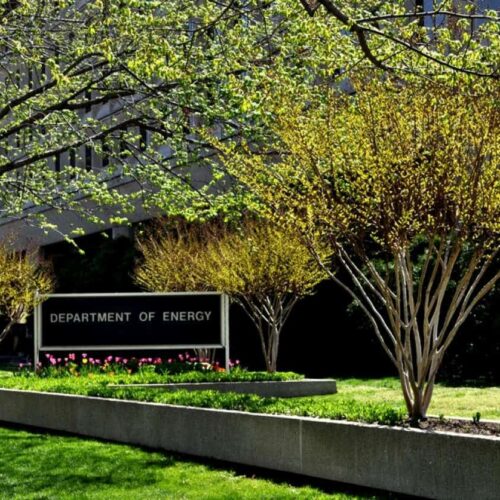Introduction
The Department of Energy reimburses the cost of pensions, retirement benefits and health care for 200,000 current and former contractor employees. The 2008 economic downturn forced contractors to increase contributions and in turn, caused DOE reimbursements to skyrocket. The Department spent $750 million in 2009 reimbursing contractor pension costs, double the amount in 2008, and projected costs are expected to increase, potentially to $1.7 billion by 2012, according to the Government Accountability Office.
DOE’s business model, dating back to the Manhattan Project, relies almost entirely on contractors to carry out department activities at DOE-owned facilities, while federal employees provide oversight. Contractors sponsor employee benefit plans, but DOE is ultimately responsible for reimbursing contractors for the cost of plans. In 2010, DOE had 46 contracts with private companies, nonprofit organizations and universities.
Due to the decline in interest rates and asset values, contractors had to increase their contributions to pension plans, making DOE’s reimbursement costs increase as well. Reimbursement costs for other contractor benefits, like health care, also increased by 10 percent in 2009, to $389 million.
“Further growth in these costs in an increasingly challenging budgetary environment could put pressure on the funding available for DOE’s mission-related activities,” the GAO said.
In 2004, GAO warned DOE that its contractor benefit costs would increase dramatically without changes to the department’s benefit compensation. DOE policy requires contractors to assess their benefit package and change it if the value exceeds 105 percent of comparable plans. But the department has not consistently required contractors to modify plans that go over the limit, adding billions of dollars in long-term cost DOE is required to reimburse.
“DOE is unable to ensure that program offices apply that policy consistently, and it continues to reimburse contractors for benefit packages that have exceeded its standard for a prolonged period,” the GAO said.
A handful of contractor pension plans account for the majority of DOE’s contractor pension liabilities. There are 12 plans with liabilities, the projected benefit obligations, exceeding $1 billion, which account for $31.4 billion of the $36.7 billion in DOE contractor benefit liabilities.Half of these plans are overseen by the National Nuclear Security Administration.
The current model gives DOE no control over contractor benefits. Contractors sponsor the plans, control the types of benefits offered, control investment strategies and determine the amount paid into the plans.
DOE has strengthened oversight of contractor pension costs, but it has not reviewed its approach for benefit oversight, changed its policy on managing plans over the limit or informed Congress of costs that may impact the Department’s work.
Officials said they would begin a review of benefits in spring 2010 but as of January 2011, DOE has yet to begin its review.
FAST FACT: The Department of Energy spends 90 percent of its budget, $22 billion, on contractors, making it the largest civilian contracting agency in the government.
Read more in Accountability
Accountability
FACT WATCH: Sarah Palin’s Twist on Paul Revere
Much-ridiculed former governor altered history – but isn’t entirely wrong


Join the conversation
Show Comments